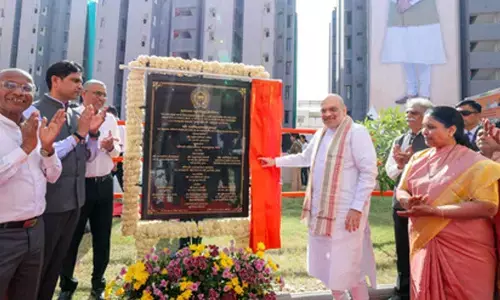Hyderabad: Desilting of lakes vital as city stares at flood threat

- Experts warn of dire consequences, including loss of life and infrastructure damage
- Urbanization and encroachment on water bodies contribute to the crisis8Lack of coordination among key departments hampers drainage system improvement
- Climate change exacerbates flooding with irregular, heavy rainfall events in a short timeframe
Hyderabad: In the wake of rapid urbanisation, mounting climate change impact and the inadequate management of vital water bodies such as lakes and rivers, Hyderabad city finds itself grappling with a dire and recurring crisis of severe flooding. Experts are sounding alarm bells, warning that this relentless inundation not only poses a significant threat to the city’s infrastructure but also results in catastrophic consequences, including tragic loss of lives. As the metropolis struggles to cope with this ever-growing menace, urgent measures are imperative to safeguard the city and its residents from the devastating consequences of unmitigated floods.
Speaking toThe Hans India, NV Umamahesh, Professor, Department of Civil Engineering, National Institute of Technology (NIT) Warangal, says, “Based on data acquired from the India Meteorological Department, Hyderabad (IMD-H) spanning from 1971 to the present day, it becomes evident that the formidable challenges of climate change and urbanisation have emerged as significant catalysts for the increasingly perilous floods besieging the city. Under the ominous shadow of climate change, Hyderabad experiences extreme rainfall events whenever rainfall descends the city, adding to the escalating flood risks.”
While Hyderabad continues to receive normal or even above-average rainfall, a concerning trend has emerged over the years — the dwindling number of rainy days. Additionally, the intensity of rainfall, when it does occur, exhibits a stark irregularity, failing to distribute evenly across the city. Instead, it culminates in abrupt and heavy downpours within a remarkably short timeframe, disrupting the rhythm of daily life and throwing normalcy into disarray.
Adding further, NV Umamahesh says, “The exacerbation of this crisis can be squarely attributed to the encroachment upon water bodies and the neglect of essential drainage system maintenance. Moreover, a pivotal factor in this escalating calamity lies in the unparalleled urbanisation that has surged since the early 1990s. This explosive growth has ushered in significant alterations in air circulation patterns, thereby resulting in substantial changes in precipitation dynamics. Additionally, the urban heat island effect, induced by rapid urbanisation, has further disrupted the natural flow of winds, compounding the challenges posed by this evolving meteorological landscape.”
Another ongoing study under Professor Gopal Naik in the Civil Engineering Department of Osmania University says, “The civic agencies responsible for drain maintenance in the city have fallen short in their efforts to adequately desilt these vital conduits. The consequences of this negligence are stark: the carrying capacity of these drains has substantially diminished over time. Encroachments upon these waterways and the deposition of non-biodegradable waste, including plastics, wood and other refuse materials, have contributed to the problem. These pollutants accumulate within the drains, resulting in reduced drainage capacity and an exacerbated risk of flooding during heavy rainfall.”
A noticeable lack of coordination among various key departments, including GHMC, Irrigation, Revenue, Lakes, Roads and Buildings, has become a glaring issue. The unique terrain of the region necessitates a comprehensive, multi-directional drainage system. To achieve this, it’s imperative to implement a strategy of creating slopes every 10 kms to facilitate unobstructed water flow into the Musi river.
Of particular importance is the meticulous consideration of water management during the issuance of building permissions. A critical aspect of this process should involve a thorough evaluation of how rainfall runoff will be managed to prevent flooding and waterlogging, ensuring that new constructions do not exacerbate the city’s existing drainage challenges.
Adding further, Gopal Naik, says, “The current drainage infrastructure, which is two to three decades old, was originally designed to serve a population of 5 million. However, the city has experienced exponential population growth due to urbanisation, the expansion of impervious surfaces, the emergence of unauthorised colonies in catchment areas, and various other factors. In light of these evolving dynamics, it is imperative to plan for the future by implementing radial drainage systems capable of accommodating the anticipated growth in population and the escalating frequency of rainfall over the next 25 years. This forward-looking approach is essential to effectively manage the city’s drainage needs in the face of ongoing urban development and changing climate patterns.”



















